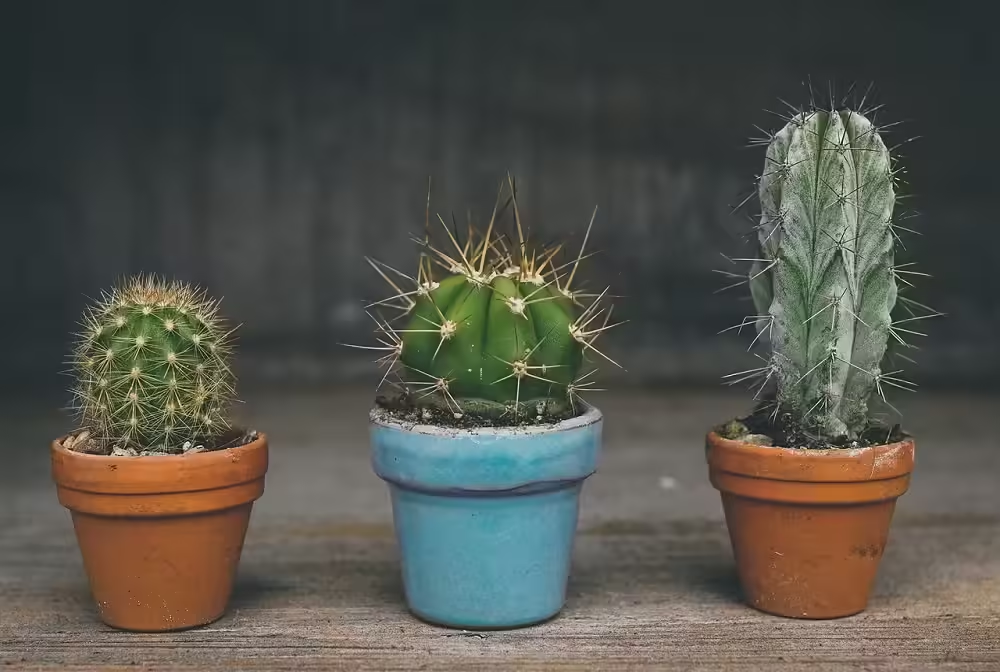The benefits of cactus plant at home go far beyond their unique and striking appearance. These resilient plants not only add a touch of the desert to your living space, but they also contribute to cleaner air, reduced stress, and even improved productivity.
Whether you’re a seasoned plant lover or a beginner, cacti are a low-maintenance option that offer a range of advantages, making them a perfect addition to any home.
Let’s explore the many benefits and advantages why having cactus plant at home can be a game-changer for your health and environment.
10 Benefits of Cactus Plants at Home
Have you ever thought about adding a cactus to your home? It turns out, these spiky wonders do more than just sit on a windowsill looking cool. From improving air quality to boosting productivity, the benefits of cactus plant at home are truly surprising.
Let’s explore 10 advantages of adding a cactus plant to your collection of home plants is a smart move.
Air Purification:
Believe it or not, cactus plants are not only tough survivors of the desert—they’re also natural air purifiers. According to a famous study conducted by NASA in 1989, plants (yes, even cacti!) can help cleanse the air of toxins like formaldehyde and benzene. Cacti, with their thick, fleshy bodies, are especially good at trapping dust and airborne particles, helping you breathe easier indoors.
Reduce the Risk of Allergies and Respiratory Issues:
If you or anyone in your household suffers from allergies or respiratory issues, cacti can be a great addition to your home. By filtering out dust and other particles, they can reduce triggers that may irritate your airways.
Toxins Eliminated among the main Benefits of Cactus Plants at Home:
We may not think about it often, but our homes are filled with invisible toxins—from cleaning products to paints and carpets. Cactus plants act as a natural detox, helping to absorb and neutralize these harmful chemicals. They’re great companions for improving indoor air quality, especially in modern homes filled with synthetic materials.
Increase Humidity Levels:
Though they come from dry climates, cactus plants still release moisture into the air, helping to balance humidity levels in your home. This can be especially helpful in dry, air-conditioned spaces or during winter months when the air tends to dry out.
Reduce Stress and Anxiety:
There’s something about caring for plants that brings peace, and cactus plants are no exception. Studies show that simply having greenery around can reduce stress and anxiety levels, making your home feel like a mini oasis of calm. The cactus, with its unique structure and striking appearance, also adds a little zen to any room.
Boost Productivity:
A fascinating study has demonstrated that having plants around—especially ones like cacti—can boost your productivity by up to 10%. Why? These hardy plants reduce carbon dioxide in the air, which helps keep your brain sharp and alert. Next time you’re working from home, place a cactus on your desk and see how your focus improves.
Combat Sick Building Syndrome:
Cacti are also excellent allies in the fight against Sick Building Syndrome, which happens when poor indoor air quality leads to a range of health problems, from headaches to fatigue. By absorbing toxins and increasing oxygen levels (even in your bedroom at night), cacti help create a healthier, fresher indoor environment.
Noise Reduction:
Yes, even background noise can be tamed by cacti! Thanks to their large surface area, cacti help absorb sound, making your home feel quieter and more peaceful. It’s a small but significant way these plants improve the overall atmosphere of your space.
Aesthetic Appeal:
Let’s not forget one of the most obvious benefits of having cactus plant at home—cacti are aesthetically pleasing. Whether you’re going for a modern, minimalist look or a desert-inspired vibe, cactus plants bring a unique touch of style to your decor. Their shapes, sizes, and colors make them versatile for any home setup, whether it’s small apartment living or a big open space.
Increase Oxygen Levels is one of the main advantages of keeping cactus plant at home:
Like all plants, cacti release oxygen through the process of photosynthesis. However, what makes them stand out is that many cacti perform photosynthesis at night. This means they keep refreshing your air even while you sleep, making them a fantastic bedroom companion for better breathing at night.
Several Benefits of Cactus Plants at Home but some cons
While the are many benefits of cactus plant at home, there are a few drawbacks to consider before adding them to your home:
- Can Be Harmful to Pets: If you have curious pets, especially cats or dogs, cactus plants can pose a risk. Some species are toxic when ingested, and the sharp spines can cause injuries if touched or chewed on.
- Potential to Cause Injuries: Cacti, with their sharp spines, can hurt you or others if you’re not careful while handling or maintaining them. Accidental brushes against the spines can cause painful cuts or pricks, so be cautious when watering or moving them.
- Slow Growth: Cactus plants are typically slow growers, meaning they won’t rapidly change in size or appearance. If you’re looking for plants that offer noticeable growth over time, cacti may not provide that satisfaction as quickly as other houseplants.
- Limited Compatibility with Some Indoor Environments: Cacti thrive in sunny, dry conditions, which may not suit all homes. If your home has low natural light or higher humidity levels, your cactus might struggle to grow and could require additional attention to ensure it stays healthy.
Famous Types of Cactus Plants
Moon Cactus Plant (Gymnocalycium mihanovichii)
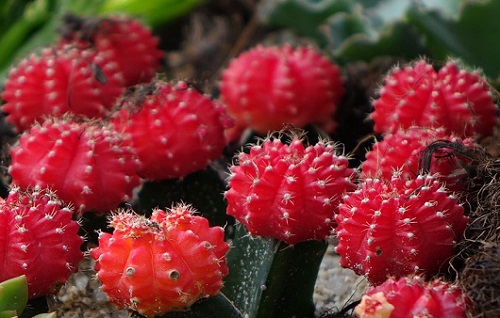
- Origin: South America (Argentina, Paraguay, Brazil)
- Specific Needs: Requires bright, indirect light and minimal water. Prefers dry, sandy soil.
- Max Size: About 6 inches tall.
- Description: Known for its brightly colored top, which can be red, pink, or yellow, the Moon Cactus is often grafted onto another cactus for support as it lacks chlorophyll.
Bunny Ear Cactus (Opuntia microdasys)
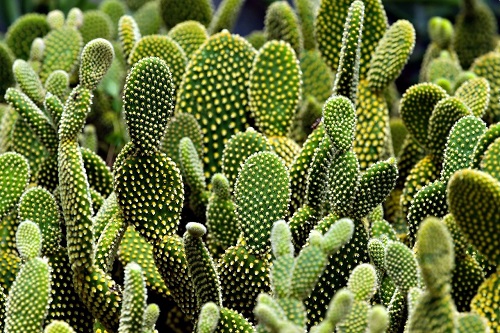
- Origin: Mexico
- Specific Needs: Thrives in full sun and needs minimal watering. Requires well-drained, sandy soil.
- Max Size: Grows up to 2-3 feet tall.
- Description: This cactus is known for its small, bunny ear-like pads covered in small, bristle-like spines. It’s a low-maintenance plant but should be handled with care due to its sharp glochids.
Angel Wing Cactus (Opuntia albispina)
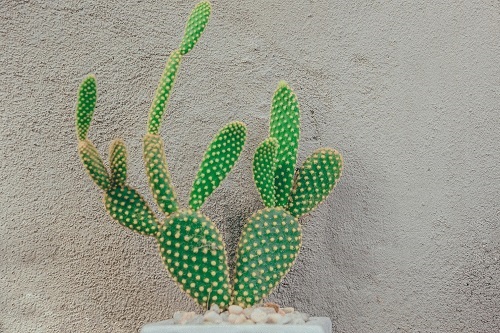
- Origin: Mexico
- Specific Needs: Loves bright sunlight and well-drained soil. Water sparingly.
- Max Size: Grows up to 5 feet tall.
- Description: Named for its distinctive shape resembling angel wings, this cactus has soft, white, hair-like spines that can still cause irritation. Its pads are flat and green, often growing in pairs.
Saguaro Cactus (Carnegiea gigantea)
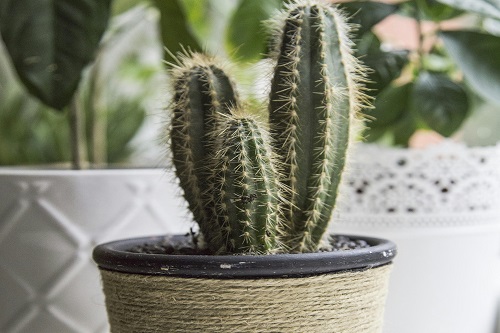
- Origin: Sonoran Desert, USA and Mexico
- Specific Needs: Requires full sun and extremely dry conditions. Very slow-growing.
- Max Size: Can reach up to 40-60 feet tall in its natural habitat.
- Description: The iconic cactus of the desert, known for its tall, columnar shape with arms that extend outward. It takes decades to grow and is primarily seen in outdoor desert environments.
Parodia Cactus Plant (Parodia magnifica)
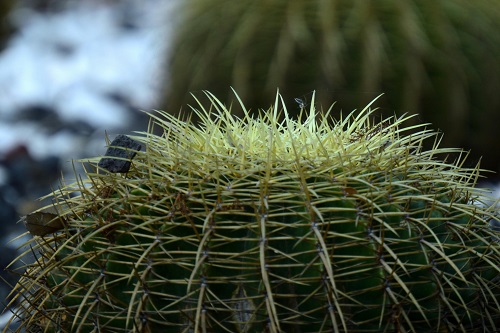
- Origin: South America (Brazil, Paraguay, Argentina)
- Specific Needs: Prefers bright, indirect light and moderate water. Requires well-drained soil.
- Max Size: About 8-12 inches tall.
- Description: Known for its round, ball-shaped appearance, the Parodia cactus is covered in spines and often blooms with small, yellow flowers. It’s relatively easy to care for.
Star Cactus Plant (Astrophytum asterias)
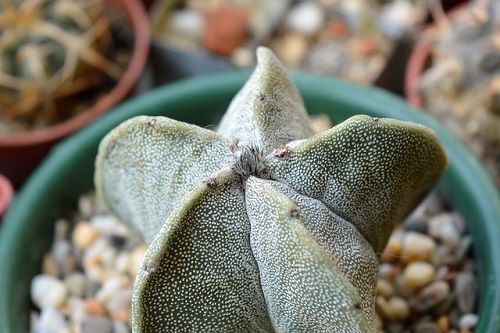
- Origin: Texas, USA and Mexico
- Specific Needs: Needs full sun and very little water. Prefers dry, sandy soil.
- Max Size: Typically 2-6 inches in diameter.
- Description: The Star Cactus is a small, round cactus with a star-shaped pattern on its top. It is low-growing and sometimes produces small, yellow flowers. It’s a perfect fit for small spaces.
Barrel Cactus Plant (Ferocactus)
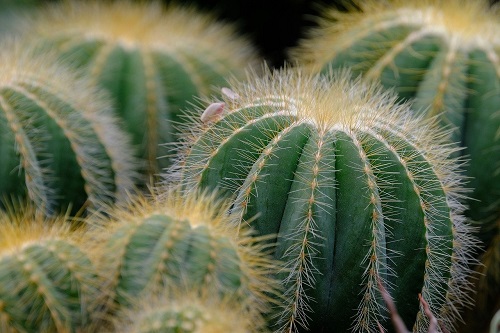
- Origin: North America (Mexico, Southwestern USA)
- Specific Needs: Needs full sun and can tolerate drought. Water infrequently.
- Max Size: Can grow up to 4-10 feet tall in outdoor environments.
- Description: This barrel-shaped cactus is ribbed with large spines and can survive harsh desert conditions. It can live for many years and may even produce yellow or red flowers at its crown.
Lady Finger Cactus Plant (Mammillaria elongata)
- Origin: Mexico
- Specific Needs: Prefers bright sunlight and well-drained soil. Water sparingly.
- Max Size: Grows up to 6-8 inches tall.
- Description: With its finger-like, elongated stems covered in white or golden spines, this cactus forms dense clusters. It’s a popular choice for home decor due to its compact size.
Old Lady Cactus Plant (Mammillaria hahniana)
- Origin: Mexico
- Specific Needs: Needs bright sunlight and minimal water. Thrives in sandy, well-drained soil.
- Max Size: Grows up to 10 inches tall.
- Description: Covered in white, hair-like spines, this cactus has a unique, fluffy appearance. It often blooms with purple or pink flowers around the crown, making it quite striking.
Aloe Marlothii (Mountain Aloe)
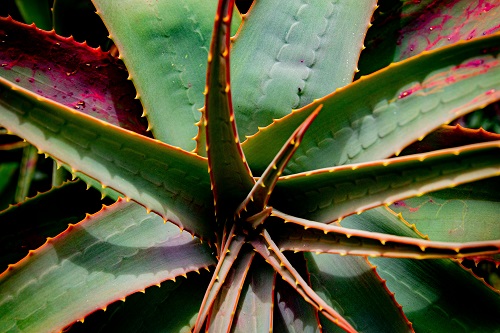
- Origin: Southern Africa
- Specific Needs: Prefers full sun and well-drained, rocky soil. Water sparingly.
- Max Size: Grows up to 10 feet tall.
- Description: Known for its thick, fleshy leaves covered in spines, this Aloe plant forms large rosettes and produces striking, orange-red flowers. It’s hardy and drought-tolerant.
Rat Tail Cactus Plant (Aporocactus flagelliformis)
- Origin: Mexico
- Specific Needs: Requires bright, indirect light and regular watering during the growing season.
- Max Size: Trails up to 3 feet long.
- Description: A trailing cactus known for its long, thin, rope-like stems, often grown in hanging baskets. It produces vibrant pink or red flowers during spring.
African Milk Tree Cactus Plant (Euphorbia trigona)
- Origin: Central Africa
- Specific Needs: Prefers bright, indirect light and occasional watering. Well-drained soil is a must.
- Max Size: Grows up to 6-8 feet tall.
- Description: Despite its name, the African Milk Tree isn’t a true cactus but a succulent. Its tall, green stems have ridges with small spines and can grow quite tall. It’s known for its resilience and easy care.
How to Take Care of Cactus Plants at Home
Among the benefits of cactus plant at home is that maintaining it at home may seem easy, given their reputation for thriving in dry conditions, but there are still a few key factors to keep in mind to ensure your cactus stays healthy and beautiful. Whether you’re a seasoned plant enthusiast or a beginner, these tips will guide you through the essentials of cactus care.
Light Requirements
Cacti love light, and most species thrive in bright, direct sunlight. Place your cactus in a sunny window where it can soak up plenty of rays. For indoor cacti, south or west-facing windows are ideal. Be cautious with smaller or young cacti as they can sometimes be sensitive to intense sunlight—if you notice browning or bleaching, you may need to adjust their placement.
Watering Schedule
One of the most common mistakes people make with cacti is overwatering. Cacti are built to store water in their stems, so they don’t need frequent watering. During the warmer months, water your cactus every 2-4 weeks, allowing the soil to dry out completely between waterings. In winter, cacti enter a dormant phase and require even less water—once every 4-6 weeks should suffice.
A good rule of thumb is to check the soil before watering. If it’s dry an inch below the surface, it’s time to water. Always use well-draining soil and pots with drainage holes to prevent root rot.
Soil and Pot Requirements
Cacti thrive in sandy, well-draining soil. Standard potting soil retains too much moisture for cacti, so it’s best to use a cactus-specific soil mix or create your own by combining potting soil with sand or perlite. Ensure your pot has drainage holes to allow excess water to escape.
If you’re re-potting your cactus, choose a pot that’s just slightly larger than the plant itself—too much room can lead to overwatering.
Temperature and Humidity
Most cacti prefer warm, dry climates, mimicking their natural desert environments. Ideal indoor temperatures for cacti range from 65°F to 80°F (18°C to 27°C). In winter, some species can tolerate cooler temperatures, but avoid exposing them to drafts or freezing conditions.
As for humidity, cacti prefer low humidity. If you live in a humid climate, ensure good airflow around your plants, and avoid misting them.
Fertilizing Your Cactus
Cacti don’t require much fertilization, but they can benefit from occasional feeding, especially during their active growing season (spring and summer). Use a diluted, balanced liquid fertilizer or a fertilizer specifically made for cacti and succulents once a month. Be careful not to over-fertilize, as this can lead to weak, leggy growth.
Pruning and Maintenance
While cacti generally don’t need much pruning, you should remove any dead or damaged parts, such as dried-out stems or rotten sections. Always use clean, sharp tools when pruning, and handle the plant carefully to avoid damaging healthy growth or injuring yourself with the spines.
Dealing with Pests
Cacti are relatively pest-resistant, but they can still fall victim to common houseplant pests like mealybugs, spider mites, or scale insects. Check your plant regularly for signs of pests, such as tiny webs or white cotton-like clusters. If you spot any, treat the plant with insecticidal soap or a natural remedy like neem oil.
Repotting Your Cactus
As your cactus grows, it may outgrow its current pot. Repotting is typically necessary every 2-3 years for younger cacti and less frequently for mature plants. The best time to repot is in the spring or early summer when the cactus is actively growing. Use gloves or tools to handle the plant to avoid getting pricked, and allow the soil to dry before repotting to prevent root damage.
Propagation
Cacti are easy to propagate, making them a great option for expanding your plant collection or sharing with friends. Many cacti can be propagated by simply taking a cutting from a healthy plant. Let the cutting dry for a few days to form a callous, then plant it in well-draining soil and water sparingly until roots form.
Final Thoughts On Benefits Of Cactus Plant At Home
Cactus plants are not only visually striking but also offer numerous health and environmental benefits, making them an excellent choice for home plants.
From improving air quality and reducing stress to providing a natural boost to your productivity, cacti can enhance your overall well-being while bringing a touch of nature indoors. Though they come with a few cons, like the risk to pets and the occasional prickly touch, the benefits of cactus plant at home far outweigh these minor downsides.
If you’re looking for big home plants that offer both beauty and functionality, cacti might be just what your home needs. Embrace the magic of these hardy plants and enjoy all the rewards they bring!

